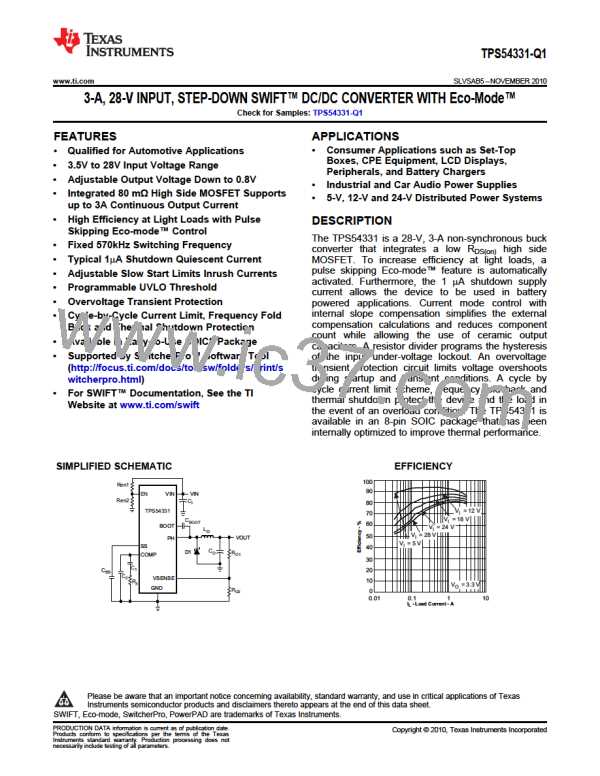TPS54331-Q1
SLVSAB5 –NOVEMBER 2010
www.ti.com
The TPS54331 provides robust protection during short circuits. There is potential for overcurrent runaway in the
output inductor during a short circuit at the output. The TPS54331 solves this issue by increasing the off time
during short circuit conditions by lowering the switching frequency. The switching frequency is divided by 8, 4, 2,
and 1 as the voltage ramps from 0 V to 0.8 V on VSENSE pin. The relationship between the switching frequency
and the VSENSE pin voltage is shown in Table 2.
Table 2. Switching Frequency Conditions
SWITCHING FREQUENCY
570 kHz
VSENSE PIN VOLTAGE
VSENSE ≥ 0.6 V
570 kHz / 2
0.6 V > VSENSE ≥ 0.4 V
0.4 V > VSENSE ≥ 0.2 V
0.2 V > VSENSE
570 kHz / 4
570 kHz / 8
OVERVOLTAGE TRANSIENT PROTECTION
The TPS54331 incorporates an overvoltage transient protection (OVTP) circuit to minimize output voltage
overshoot when recovering from output fault conditions or strong unload transients. The OVTP circuit includes an
overvoltage comparator to compare the VSENSE pin voltage and internal thresholds. When the VSENSE pin
voltage goes above 109% × Vref, the high-side MOSFET will be forced off. When the VSENSE pin voltage falls
below 107% × Vref, the high-side MOSFET will be enabled again.
THERMAL SHUTDOWN
The device implements an internal thermal shutdown to protect itself if the junction temperature exceeds 165°C.
The thermal shutdown forces the device to stop switching when the junction temperature exceeds the thermal
trip threshold. Once the die temperature decreases below 165°C, the device reinitiates the power up sequence.
10
Submit Documentation Feedback
Copyright © 2010, Texas Instruments Incorporated
Product Folder Link(s): TPS54331-Q1

 TI [ TEXAS INSTRUMENTS ]
TI [ TEXAS INSTRUMENTS ]